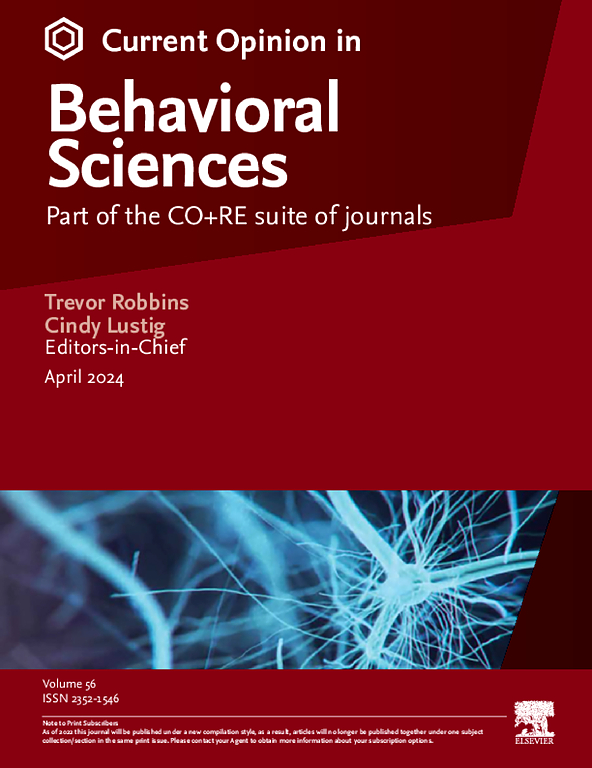The default mode subnetworks’ involvement in diverse cognitive transitions suggests a role in external update of internal models
IF 3.5
2区 心理学
Q1 BEHAVIORAL SCIENCES
引用次数: 0
Abstract
The Default Mode Network (DMN), traditionally associated with internally oriented cognition, has been increasingly implicated in processing external stimuli that signal the need to update an internal mental model, defined as neural representations that simulate and predict relationships between elements that make up events. This review synthesizes recent findings on the DMN’s role in diverse cognitive transitions, including feature changes and event boundaries during movie watching, and externally cued task switches during complex behavioural paradigms. Studies using naturalistic stimuli reveal the functional specialization of DMN subnetworks: the medial temporal lobe subnetwork responds to location and temporal transitions, the dorsomedial prefrontal cortex subnetwork prefers social transitions, and the Core DMN exhibits generalised responses across all these transition types. Meanwhile, in task-based paradigms, the Core DMN is also activated during external task switches, compared to task repeats, both representing and dependent upon a hierarchical task structure, further underscoring DMN involvement in maintaining and updating mental models. We propose that the Core DMN binds information across DMN subnetworks into a hierarchically chunked internal model, where elements are organized into nested levels of abstraction, to provide context for evolving naturalistic experiences and a substrate to guide behaviour. This unifying framework highlights the DMN's integral role in context-dependent cognitive transitions, dynamically integrating internal and external representations during both active and passive states.
默认模式子网络参与多种认知转换,表明其在内部模型的外部更新中起作用
默认模式网络(DMN),传统上与内部导向认知相关联,已经越来越多地涉及到处理外部刺激,这些刺激表明需要更新内部心理模型,定义为模拟和预测构成事件的元素之间关系的神经表征。这篇综述综合了DMN在多种认知转换中的作用,包括电影观看过程中的特征变化和事件边界,以及复杂行为范式中的外部提示任务转换。使用自然刺激的研究揭示了DMN子网络的功能专门化:内侧颞叶子网络响应位置和时间过渡,背内侧前额叶皮层子网络偏好社会过渡,核心DMN在所有这些过渡类型中表现出普遍的反应。与此同时,在基于任务的范式中,与任务重复相比,核心DMN在外部任务切换期间也被激活,这既代表又依赖于分层任务结构,进一步强调了DMN参与维护和更新心理模型。我们建议核心DMN将跨DMN子网的信息绑定到一个分层块的内部模型中,其中元素被组织成嵌套的抽象层次,为不断发展的自然体验提供背景,并为指导行为提供基础。这个统一的框架强调了DMN在情境依赖的认知转换中的整体作用,在主动和被动状态下动态整合内部和外部表征。
本文章由计算机程序翻译,如有差异,请以英文原文为准。
求助全文
约1分钟内获得全文
求助全文
来源期刊

Current Opinion in Behavioral Sciences
Neuroscience-Cognitive Neuroscience
CiteScore
10.90
自引率
2.00%
发文量
135
期刊介绍:
Current Opinion in Behavioral Sciences is a systematic, integrative review journal that provides a unique and educational platform for updates on the expanding volume of information published in the field of behavioral sciences.
 求助内容:
求助内容: 应助结果提醒方式:
应助结果提醒方式:


